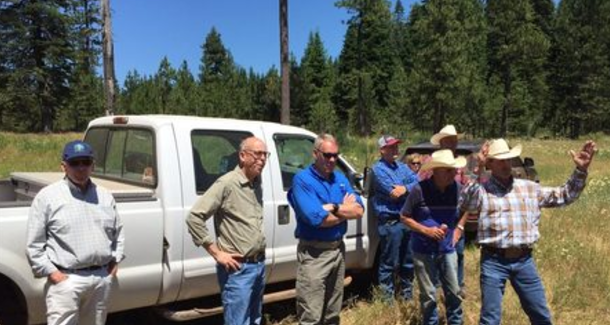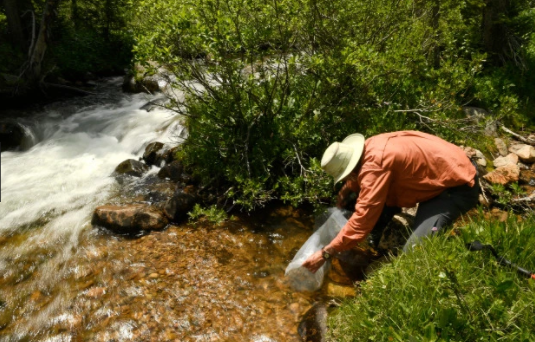Photo by Helen H. Richardson, The Denver Post
Colorado’s state fish, the imperiled greenback cutthroat trout, got a boost this week when nearly 1,000 year-old fish were released into a small stream high along the Continental Divide above the famed Eisenhower Tunnel that cuts through the mountains that divide the state in two.
The fish, the second planting for Herman Gulch (the first planting didn’t go well, unfortunately), are believed to be hardier than the last batch and more equipped to handle the austere environs of a cold, clear creek that forms from snowmelt and eventually drains into Clear Creek, a major tributary of the famed South Platte. This is the native range for greenbacks, which, at one time, were thought to be extinct.
 “It’s kind of a biological crossroads between a number of different eco-regional units, such as the Cascades and the Siskiyous, and the Great Basin,” said TU Senior Scientist Jack Williams. The area is rich in biodiversity, and the monument protects vital salmon and steelhead spawning and rearing waters.
“It’s kind of a biological crossroads between a number of different eco-regional units, such as the Cascades and the Siskiyous, and the Great Basin,” said TU Senior Scientist Jack Williams. The area is rich in biodiversity, and the monument protects vital salmon and steelhead spawning and rearing waters.
Of note: About 2.5 million comments were received by Interior in the abbreviated comment period that ended earlier this month. The vast majority of them support leaving all of the monuments under review in place.
Finally, in Pennsylvania, TU volunteer Brian Wagner penned a guest editorial in Lehigh Valley Live noting that rescinding the the Clean Water Rule that protects headwater streams from unpermitted development is a misguided idea that is leading the Environmental Protection Agency in the wrong direction.
“I care because I fish—a lot—and many of these streams are headwaters where wild trout spawn and spend their early years,” Wagner wrote. “I grew up in this area fishing in places like Bushkill Creek, a wild trout stream that winds through Easton on its way to the Delaware River. Its route is punctuated with the skinny tributaries that are critical to a healthy fishery.
“During my lifetime, I’ve seen how the Clean Water Act has saved these and other streams in Pennsylvania, supporting a recreational fishing economy that tops $1 billion. I fear the EPA’s proposal puts these successes in jeopardy.”
Well-written, Brian.
— Chris Hunt



